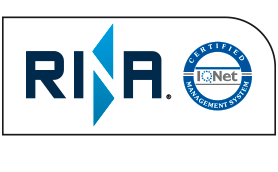MISCELLANEOUS INFORMATION
SHF1 AND SHF2 COVERS ACCORDING TO NEK-606
SHF1 x SHF2 (NEK-606)
The outer jacket of a cable is a very important component. Protects the cable from various external physical elements such as high and low temperatures, oil, water pressure, fire, UV radiation, salt water and mud. The Nek 606 standard qualifies two types of outer cover: SHF1 and SHF2.
SHF1: is a compound for use in external covers, halogen-free thermoplastic and produces low toxic smoke in the event of fire.
SHF2: is a compound for use in external covers, thermostable crosslinked halogen-free and produces low toxic smoke in the event of fire.
There are differences between the two types of compounds. The SHF1 outer shell is harder, the SHF2 is more flexible. They are used for different applications and in different locations. For example, SHF1 is used in rooms with IT equipment, tall buildings such as hotels, hospitals and subway systems. SHF2 is most common on offshore platforms and vessels.
Differences in the material properties of SHF1 and SHF2:
The outer jackets of offshore cables need to be stronger than any other cable. As mentioned and in accordance with the Nek 606 standard, offshore cables need to withstand all types of environmental aggressions.
In addition to the above-mentioned differences, there are differences in material characteristics as well. It depends on several factors such as environmental aspects and types of application, how to define whether SHF1 or SHF2 is the best choice? The table below describes the characteristic differences between SHF1 and SHF2:
| SHF1 | SHF2 | |
| Material type | Halogen-free thermoplastic | Halogen-free elastomer or thermosetting material |
| Mechanical characteristics after immersion in hot oil (IEC 60881-404) | No requirements | 100°C for 24 hours:
|
| Hot test (IEC 60811-507) | No requirements | 200°c for 15 minutes under load with mechanical tension of 20 N/mm²:
|
| Pressure test under high temperature (IEC 60811-508) | 80°C, 4 to 6 hours under load depending on cable diameter:
| No requirements |
| Thermal shock test (IEC 60811-509) | 150°C for 1 hour | No requirements |
| Ozone resistance test (IEC 60811-403) (Alternative test method B can be used) | No requirements | 25 ± 2 °C for 24 hours:
|
Outer cover of SHF1 (application):
PVC is a synthetic material that is often used for external covers, but it is not accepted because it contains chlorine, which is a halogen. An excellent substitute is an HFFR (Halogen Free Flame/Retardant) or LSZH (Low Smoke Zero Halogen) compound. This synthetic material meets the requirements of IEC 60092-539 for SHF1 outer covers. In case of fire, an LSZH compound will not spread the fire, it will not melt/drip and will not cause thick black smoke. And most importantly, it will not emit toxic gases during a fire.
SHF2 Outer Cover (Application):
SHF2 synthetic material is typically a multi-functional elastomer. This compound is able to resist high temperatures, oil and adverse weather conditions. This synthetic material meets the requirements of IEC 60092-539 used in external covers. Suitable for use and application in the offshore industry SHF2 produces a minimum amount of smoke in the event of a fire. The cable will not spread fire and does not emit halogen acids.
Distinction between SHF1 and SHF2:
Until recently, the distinction between the two materials was not very clear. In the latest version (edition 5) of Nek 606, the requirements for oil and mud for external covers (SHF2) have been updated, distinguishing a mandatory minimum level and two optional levels of higher performance. The levels are divided as follows:
- Minimum required oil resistance.
- Greater resistance to oil.
- Mud resistance





